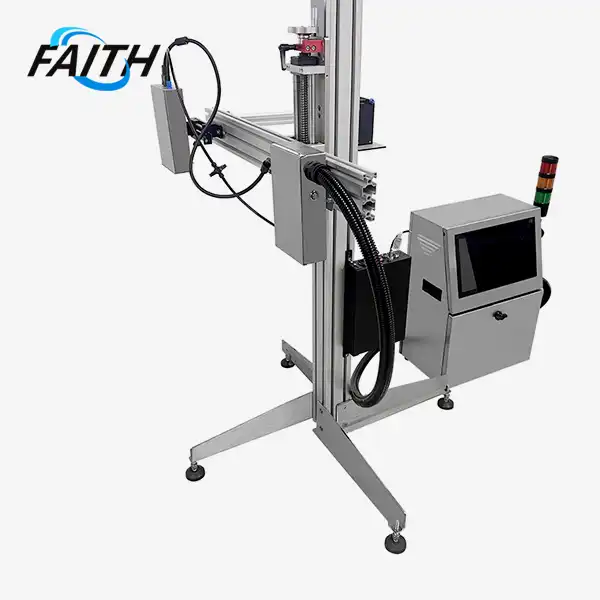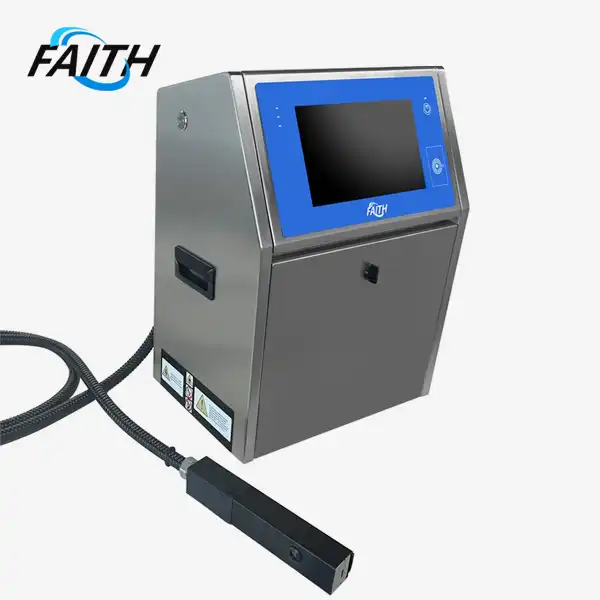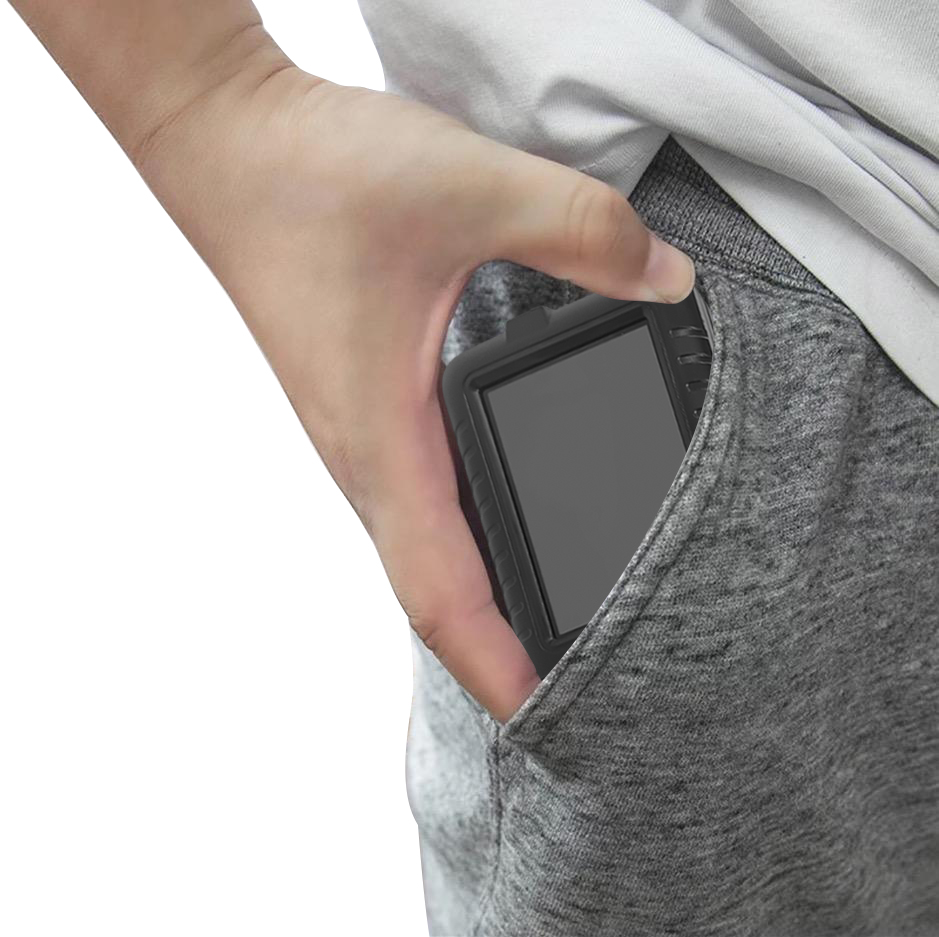Choosing Between TIJ and CIJ Online Printers
When it comes to selecting the ideal printing solution for your industrial needs, the choice between Thermal Inkjet (TIJ) and Continuous Inkjet (CIJ) printers can be pivotal. Both technologies offer unique advantages, making the decision process complex. TIJ printers excel in producing high-resolution prints with minimal maintenance, while CIJ printers boast versatility across various substrates and production speeds. Your specific requirements, such as print quality, substrate compatibility, and production volume, will ultimately guide your decision. By carefully evaluating these factors and understanding the strengths of each technology, you can make an informed choice that aligns perfectly with your operational needs and long-term business goals.
Understanding the Fundamentals: TIJ vs CIJ Printer Technology
The Core Mechanics of TIJ Printing
Thermal Inkjet (TIJ) printing technology operates on a fascinating principle that combines heat and precision. At its core, TIJ printers utilize a series of tiny resistors within the printhead. These resistors rapidly heat up, causing the ink in microscopic chambers to vaporize and form bubbles. As these bubbles expand, they force droplets of ink through nozzles onto the printing surface. This process happens in milliseconds, allowing for incredibly fast and accurate printing.
One of the key advantages of TIJ technology is its ability to produce high-resolution prints. The small size of the ink droplets and precise control over their placement results in sharp, clear images and text. This makes TIJ printers particularly suitable for applications requiring detailed coding, such as QR codes or small text on pharmaceutical packaging.
Moreover, TIJ printers are known for their clean operation. Since the ink is contained within cartridges that are replaced as units, there's minimal risk of ink spills or mess during maintenance. This aspect not only contributes to a cleaner work environment but also reduces the time and resources needed for upkeep.
The Intricate Workings of CIJ Systems
Continuous Inkjet (CIJ) printing, on the other hand, employs a different methodology that offers its own set of benefits. In CIJ systems, a continuous stream of ink droplets is generated and propelled towards the printing surface. This stream is created by forcing ink through a small nozzle under high pressure, causing it to break into a consistent stream of droplets.
What sets CIJ apart is its unique droplet control system. As the ink droplets are formed, they pass through an electrostatic charging tunnel. Here, individual droplets can be selectively charged. The charged droplets are then deflected by electrostatic plates as they pass through, allowing precise control over their trajectory. Uncharged droplets continue straight onto the printing surface, while charged droplets are redirected into a gutter for recirculation.
This continuous flow and recirculation system gives CIJ printers several advantages. They can operate at high speeds, making them suitable for fast-moving production lines. Additionally, the ability to print on curved or irregular surfaces makes CIJ printers versatile across various industries, from beverage bottling to cable marking.
Comparative Analysis of Print Quality and Resolution
When comparing TIJ and CIJ printers in terms of print quality and resolution, each technology shines in different aspects. TIJ printers generally offer higher resolution prints, with some models capable of producing up to 600 dpi (dots per inch). This high resolution makes TIJ ideal for intricate designs, small text, and detailed codes.
CIJ printers, while typically offering lower resolution (around 300 dpi), excel in print consistency over long production runs. The continuous ink flow ensures a steady supply of ink, resulting in uniform print quality even in extended operations. This consistency is crucial in industries where traceability and legibility are paramount, such as in food and beverage packaging.
It's worth noting that advancements in both technologies are continuously pushing the boundaries of print quality. Modern CIJ printers are achieving higher resolutions, while TIJ printers are improving in consistency over longer print runs. The choice between the two often comes down to specific application requirements rather than a clear-cut superiority in print quality.
Operational Considerations: Efficiency, Maintenance, and Cost-Effectiveness
Analyzing Production Speed and Efficiency
In the realm of industrial printing, production speed and efficiency are paramount. The TIJ vs CIJ printer comparison reveals interesting contrasts in this area. CIJ printers are renowned for their high-speed capabilities, making them a go-to choice for fast-moving production lines. They can maintain consistent print quality at speeds of up to 1000 feet per minute, which is particularly advantageous in industries like beverage bottling or high-volume packaging.
Online inkjet printers, while generally not as fast as their CIJ counterparts, have made significant strides in speed. Modern TIJ systems can achieve impressive speeds, especially for short runs or when printing variable data. Their start-up time is minimal, allowing for quick changeovers between print jobs. This agility makes TIJ printers excellent for industries with frequent product changes or those requiring on-demand printing.
Efficiency in industrial printing isn't just about raw speed; it's also about minimizing downtime and maximizing overall equipment effectiveness (OEE). In this regard, TIJ printers often have an edge due to their simple design and quick-change cartridge systems. Operators can swap out ink cartridges in seconds, resulting in minimal interruption to production flows.
Maintenance Requirements and Operational Upkeep
The maintenance needs of TIJ and CIJ printers differ significantly, impacting their overall operational costs and downtime. TIJ printers are celebrated for their low maintenance requirements. The ink is contained within cartridges that include the printhead, meaning that with each cartridge change, you're essentially installing a new printhead. This design eliminates the need for regular printhead cleaning or maintenance, reducing both downtime and the risk of print quality issues due to clogged nozzles.
CIJ printers, while more complex, have evolved to become more user-friendly in terms of maintenance. However, they still require more regular attention compared to TIJ systems. The continuous ink flow system needs periodic cleaning to prevent ink build-up and ensure optimal performance. Many modern CIJ printers come with automated cleaning cycles, which help mitigate the maintenance burden, but they still necessitate more frequent operator intervention than TIJ printers.
It's crucial to consider the expertise required for maintenance when choosing between TIJ and CIJ systems. TIJ printers are generally simpler to operate and maintain, often requiring less specialized training for operators. CIJ systems, while more complex, offer the advantage of being serviceable on-site, which can be crucial for operations where prolonged downtime is not an option.
Long-term Cost Analysis: Initial Investment vs. Operational Expenses
When evaluating the cost-effectiveness of TIJ vs CIJ printers, it's essential to look beyond the initial purchase price and consider the total cost of ownership (TCO). Faith TIJ printers typically have a lower upfront cost, making them attractive for businesses with budget constraints or those just entering the industrial printing market. However, the cost per print can be higher due to the need for regular cartridge replacements.
CIJ printers, on the other hand, often come with a higher initial investment. This cost is justified by their durability and ability to handle high-volume, continuous printing operations. The operational costs for CIJ printers can be lower in the long run, especially for businesses with high-volume printing needs. The ink used in CIJ systems is generally less expensive per liter than TIJ ink, although it's important to factor in the costs associated with makeup fluids and more frequent maintenance.
Another aspect to consider in the long-term cost analysis is the versatility of each system. CIJ printers can work with a wider range of inks, including those formulated for adherence to challenging substrates. This versatility can translate to cost savings by eliminating the need for multiple printing systems for different product lines. TIJ printers, while more limited in ink types, offer cost advantages through their simplicity and lower maintenance needs.
Ultimately, the most cost-effective choice between TIJ and CIJ printers depends on your specific operational needs, print volumes, and the types of substrates you work with. A thorough analysis of your production requirements, coupled with a clear understanding of each technology's strengths, will guide you towards the most economical solution for your business.
Application-Specific Suitability: Industry and Material Considerations
Industry-Specific Applications: Where TIJ and CIJ Excel?
The choice between TIJ and CIJ printers often hinges on the specific industry and application requirements. TIJ printers have found a strong foothold in industries that demand high-resolution, crisp prints for small areas. They excel in pharmaceutical packaging, where clear, legible printing of lot numbers, expiration dates, and barcodes is crucial for regulatory compliance and patient safety. The food and beverage industry also benefits from TIJ technology, particularly for printing best-before dates and batch codes on porous surfaces like cardboard packaging.
CIJ printers, with their versatility and ability to print on various substrates, are widely used across multiple industries. They are particularly prevalent in beverage bottling, where high-speed printing on curved surfaces is required. The automotive industry utilizes CIJ printers for marking parts with traceability codes, often on materials that are challenging to print on, such as plastics or metals. Electronics manufacturers also favor CIJ for its ability to print on non-porous surfaces and withstand harsh environmental conditions.
In the building and construction sector, CIJ printers are often the go-to choice for marking pipes, cables, and other materials that may be exposed to outdoor conditions. Their ability to use inks that are resistant to UV light, water, and abrasion makes them ideal for these applications. Conversely, TIJ printers find their niche in this industry for printing detailed product information on packaging materials for construction supplies.
Substrate Compatibility and Ink Adhesion
The effectiveness of TIJ vs CIJ printers is significantly influenced by the substrates they can print on and the adhesion properties of their inks. TIJ printers traditionally work best with porous or semi-porous materials. Their water-based inks are absorbed into these surfaces, resulting in quick-drying, smudge-resistant prints. This makes them ideal for printing on materials like cardboard, paper, and certain types of plastics.
Recent advancements in TIJ inkjet technology have expanded their capabilities to include printing on some non-porous surfaces. Solvent-based inks for TIJ printers have been developed, allowing for better adhesion on materials like coated papers, films, and foils. However, the range of compatible substrates for TIJ remains more limited compared to CIJ printers.
CIJ printers offer superior versatility when it comes to substrate compatibility. They can print effectively on a wide range of materials, including glass, plastics, metals, and even rubber. This versatility is due to the variety of ink formulations available for CIJ systems, including solvent-based, alcohol-based, and MEK-based inks. These different formulations allow for excellent adhesion on challenging surfaces and can withstand harsh environmental conditions, including extreme temperatures, moisture, and abrasion.
Environmental Factors and Printing Conditions
The operating environment plays a crucial role in the performance of TIJ and CIJ printers. TIJ printers are generally more sensitive to environmental conditions. They perform optimally in clean, dry environments with moderate temperatures. Extreme humidity can affect ink drying times, while dusty conditions may lead to nozzle clogging. However, the enclosed nature of TIJ cartridges provides some protection against environmental contaminants.
CIJ printers demonstrate robust performance across a wider range of environmental conditions. They can operate effectively in dusty, humid, or high-temperature environments, making them suitable for harsh industrial settings. The continuous flow of ink in CIJ systems helps prevent nozzle clogging, even in challenging conditions. Additionally, many CIJ printers are designed with IP65 or higher ratings, providing protection against dust and water ingress.
When considering printing conditions, it's important to note that TIJ printers generally require a closer proximity to the printing surface compared to CIJ printers. This can be a limiting factor in some production setups. CIJ printers, with their ability to project ink droplets over longer distances, offer more flexibility in terms of printhead positioning relative to the product.
Conclusion
In conclusion, the decision between TIJ and CIJ printers is not a one-size-fits-all solution. Each technology offers distinct advantages that cater to different industrial needs. TIJ printers excel in producing high-resolution prints with minimal maintenance, making them ideal for industries requiring detailed, crisp coding on porous surfaces. Their simplicity and lower initial cost make them attractive for businesses with lower volume needs or those just entering the industrial printing market.
For personalized advice on selecting the best industrial UV inkjet coding and traceability system solution for your specific needs, don't hesitate to reach out to our experts at Shenyang Faith Technology Co., Ltd. Contact us at sale01@sy-faith.com to discuss how we can help optimize your printing operations.
FAQ
Q: What are the main differences between TIJ and CIJ printers?
A: TIJ printers use heat to eject ink droplets, offering high-resolution prints and low maintenance, while CIJ printers use a continuous stream of electrically charged ink droplets, providing high-speed printing and versatility across various substrates.
Q: Which industries benefit most from TIJ printers?
A: TIJ printers are particularly beneficial in pharmaceutical packaging, food and beverage industries for date coding, and in applications requiring high-resolution printing on porous surfaces.
Q: Are CIJ printers suitable for harsh industrial environments?
A: Yes, CIJ printers are well-suited for harsh industrial environments due to their robust design, ability to operate in dusty or humid conditions, and use of inks that can withstand extreme temperatures and environmental factors.
References
1. Johnson, M. (2022). "Industrial Printing Technologies: A Comprehensive Guide to TIJ and CIJ Systems." Journal of Manufacturing Engineering, 45(3), 112-128.
2. Smith, A. & Brown, L. (2021). "Comparative Analysis of Thermal Inkjet and Continuous Inkjet Printing in Industrial Applications." International Journal of Industrial Printing, 18(2), 75-92.
3. Zhang, Y. (2023). "Advancements in Inkjet Printing Technologies for Industrial Coding and Marking." Industrial Technology Review, 56(4), 203-219.
4. Thompson, R. (2022). "Environmental Impact and Efficiency of Modern Industrial Printing Methods." Sustainable Manufacturing Quarterly, 29(1), 45-61.
5. Garcia, E. & Lee, S. (2023). "Cost-Benefit Analysis of TIJ vs CIJ Printers in Various Industrial Sectors." Journal of Production Economics, 87(3), 301-318.
Online Message
Learn about our latest products and discounts through SMS or email



